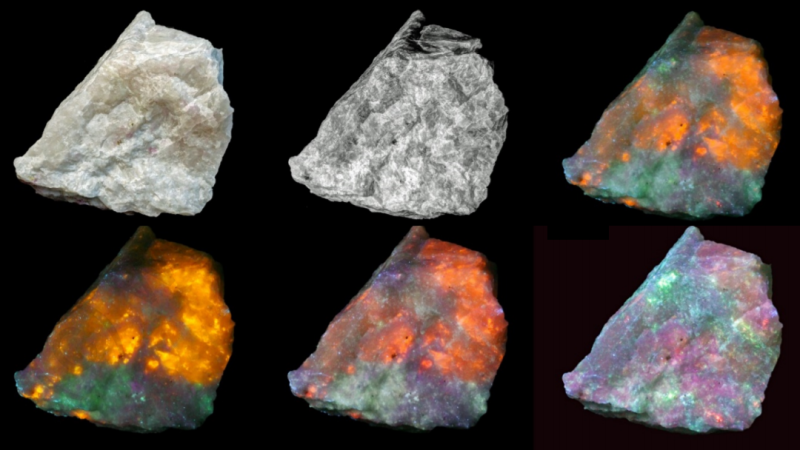The image shown is the mineral Hackmanite, which fluoresces under ultraviolet lighting. However, not all UV is created equal, and that makes a difference if you’re into UV imaging. The image for this article is from [David Prutchi] and shows the striking results of using different wavelengths of UV. [David] goes into detail on how to make your own DIY Long, Medium, and Short-wave UV Illuminator complete with part numbers and wiring diagram. The device isn’t particularly complicated; the real work was determining the exact part numbers and models of lamp, filters, and ballasts required to get the correct results. [David] has done that work and shared it for anyone interested in serious UV fluorescence photography, along with a white paper on the process.
We’ve seen [David]’s work before. We featured his DIY short-wave UV imager in the past, and his DOLPi camera project was a 2015 Hackaday Prize finalist. It’s clear he really knows his stuff, and genuinely enjoys sharing his discoveries and work.















Just be careful with the shortwave. You can give yourself sunburn, been there, done that. Also some shortwave germicidal lamps will make ozone so you got to watch out for that.
Holy crap! That is some serious sunburn, and it seems to both front & back – fell asleep in a tanning bed perhaps?
Eye protection?
Don’t look at lamp with remaining eye.
Yeah, full wrap around googles like they use with lasers since light can bounce. But you still have to watch out for your skin.
And the germicidal lamps will shred DNA, which is how they are germicidal. I like my DNA unshred.
This. I played with a quartz-tube (short λ) UV lamp when I was about 10 years old and got terrible sunburn in my eyes from looking at the tube without safety glasses.
Don’t look at the tube without safety glasses.
Yup, like having sand in your eyes. Not very pleasant.
I remember around Halloween discovering that they make the 10W standard COB LED packages with UV LEDs too… There were about 4-8 different wavelength ranges available… I wonder if this would be applicable?
Copying the specs from one random listing:
Wavelength : 365nm-370nm; 370nm-375nm; 380nm-385nm; 385-390nm; 395nm-400nm; 400nm-410nm; 410-420nm
This might be easier than messing around with CFL arrays.
Unfortunately, those are all UV-A (“LW”). We don’t yet have LEDs that can emit photons with wavelengths of 100-300nm—we still have to use arclamps for those.
I do remember there are shortwave LEDs into the 250-ish nm region, but they cost a fortune and have low output…
You won’t get short wavelengths out of LED’s because they are made out of plastic which is a really bad transmitter of UV light. Regular glass is pretty bad. The germicidal lamps are made out of quartz glass.
You can get LEDs with glass/silica windows that will pass deeper UV.
See fig. 5 (UV spectrum) of the ‘whitepaper’–one of the most instructive parts of this article. The take-away is that, unless you can get a 360 nm LED, you haven’t gotten to LW UV. This (figure 5) also explains why the different wavelength ranges you’ve listed are not significantly different, except for 365 nm. If a vendor uses a listing like this to get a higher price for a 380 nm device vs. a 420 nm LED, you’re being scammed. The scorpions don’t know the difference.